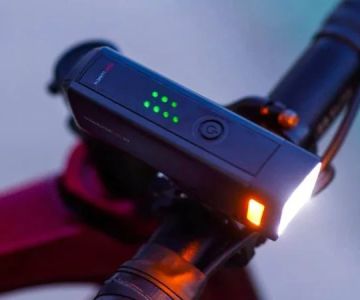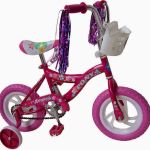
- why-bike-bells-are-essential-for-urban-cycling
- key-features-to-consider-in-a-urban-bike-bell
- real-urban-scenarios-where-bike-bells-matter
- top-bike-bell-recommendations-for-city-cyclists
- choosing-the-right-bike-bell-for-your-needs
1. Why Bike Bells Are Essential for Urban Cycling
Urban cycling is on the rise, from London’s bustling bike lanes to smaller towns across the U.S. and Europe. With more cyclists sharing space with cars, pedestrians, and scooters, staying safe isn’t just about wearing a helmet—audible awareness matters. That’s where a reliable bike bell comes in.
The best bike bell for urban safety isn’t just about volume; it’s about clarity, ease of use, and how quickly it alerts others to your presence. In city environments filled with noise, having a bell that cuts through the chaos can literally prevent accidents.
In fact, in places like New York City and Amsterdam, using a bell isn’t just recommended—it’s required by law. But legalities aside, a bell is one of the most respectful ways to coexist with pedestrians and other cyclists. It's your voice in traffic, and it can make a world of difference when navigating tight corners or crowded crossings.
2. Key Features to Consider in a Urban Bike Bell
2.1 Loudness and Tone
A bell that’s too quiet won’t do you much good in traffic or on a busy urban trail. Look for bells with at least 85-100 decibels of sound. Equally important is the tone—clear, sharp notes carry better and sound more polite than harsh or buzzing ones. Brass bells tend to deliver the best resonance.
2.2 Mounting Position and Accessibility
In a city, response time is crucial. Your bell should be positioned close to your thumb or forefinger so you can activate it instantly without adjusting your grip. Some bells even offer left- or right-hand mounting options, which helps riders with different handlebar setups.
2.3 Durability and Weather Resistance
Urban riders face all kinds of conditions—rain, heat, and even road grime. A good urban bike bell should be rust-resistant and weatherproof. Stainless steel or coated aluminum bells tend to last longer without losing sound quality or looking tarnished.
2.4 Style That Fits Your Ride
Let’s face it: we want our gear to look good too. Sleek, minimal bells complement modern commuter bikes, while vintage designs suit classic city cruisers. Fortunately, many brands now offer a variety of designs without compromising function.
3. Real Urban Scenarios Where Bike Bells Matter
3.1 Avoiding Collisions on Shared Paths
Tom, a daily commuter in Chicago, recalls a close call on the Lakeshore Trail: “I was behind a group of joggers with headphones. Yelling didn’t help, but my brass bell got their attention instantly. They moved over, no conflict, no stress.” This is a classic case where a strong, crisp bell outperforms shouting or waving.
3.2 Navigating Pedestrian Crossings in London
Emily, who cycles to her office near King’s Cross, swears by her compact, high-pitched bell. “Crosswalks in London get packed. If I’m silent, I blend in. But my bell signals presence without being rude, and people actually thank me for it.”
3.3 Alerting Vehicles While Lane-Splitting
Not all urban cyclists stay in bike lanes. In cities like Los Angeles, where lane-splitting is more common, cyclists use bells to signal to idling or slow-moving cars. Quick taps help avoid dooring accidents—especially when drivers don’t check their mirrors.
4. Top Bike Bell Recommendations for City Cyclists
4.1 Minimalist Bells for Sleek Commuters
Brands like Knog and Spurcycle offer slimline bells that don’t clutter your handlebars but deliver crisp, penetrating sound. These bells are ideal for city cyclists who value both form and function. They’re pricier, but the build quality and tone are unmatched.
4.2 Budget-Friendly Bells for Everyday Riders
If you're just getting into urban cycling, bells from Crane or Bontrager offer excellent performance for under $20. These bells tend to be slightly bulkier but are loud, clear, and easy to install. For students or casual commuters, they’re a smart choice.
4.3 Specialty Bells for Unique Urban Needs
Some bells feature a dual-tone mechanism for varied sound in different traffic situations. Others, like electronic bells, are designed for e-bikes or delivery riders needing a louder presence. If you're unsure what best suits your ride and route, Cycling Guider can help match you with the right product based on your city and bike type.
5. Choosing the Right Bike Bell for Your Needs
5.1 Match Your Environment
Are you riding in a quiet suburb, or weaving through city centre traffic? Your location should guide your choice. Urban centres demand louder, faster-responding bells, while softer tones may work in parks or shared greenways.
5.2 Think About Frequency of Use
If you ride daily, invest in durability and comfort. Reaching for your bell should feel instinctive. If you're a weekend city cyclist, a simple but reliable bell will do the trick—just make sure it's always mounted and working.
5.3 Get Personalised Help at Cycling Guider
At Cycling Guider, we understand that urban safety starts with awareness. That’s why we help you choose the best bike bell not just based on reviews, but on your riding habits, location, and style. Whether you’re commuting, cruising, or making deliveries, we can help you find the safest, most stylish bell for your ride.







 Billet BMX5.0 (2 reviews)
Billet BMX5.0 (2 reviews) Far East Children Bicycle Factory1.0 (1 reviews)
Far East Children Bicycle Factory1.0 (1 reviews) Archer Motorsports, Inc.4.0 (8 reviews)
Archer Motorsports, Inc.4.0 (8 reviews) YEP Bike Works4.0 (55 reviews)
YEP Bike Works4.0 (55 reviews) Gorham Bike & Ski4.0 (498 reviews)
Gorham Bike & Ski4.0 (498 reviews) Alchemy Bikes4.0 (37 reviews)
Alchemy Bikes4.0 (37 reviews) How to Teach Kids to Ride a Bike: A Step-by-Step Guide for Parents
How to Teach Kids to Ride a Bike: A Step-by-Step Guide for Parents Tips for Riding on Busy City Streets: Smart Strategies for Urban Cyclists
Tips for Riding on Busy City Streets: Smart Strategies for Urban Cyclists Best US National Parks for Mountain Biking: Ride Epic Trails Across America
Best US National Parks for Mountain Biking: Ride Epic Trails Across America Best Aero Helmets for Time Trials and Racing
Best Aero Helmets for Time Trials and Racing How to Clean and Lubricate Your Bike Chain Like a Pro
How to Clean and Lubricate Your Bike Chain Like a Pro 10 Must-Have Items for Long-Distance Cycling Trips
10 Must-Have Items for Long-Distance Cycling Trips